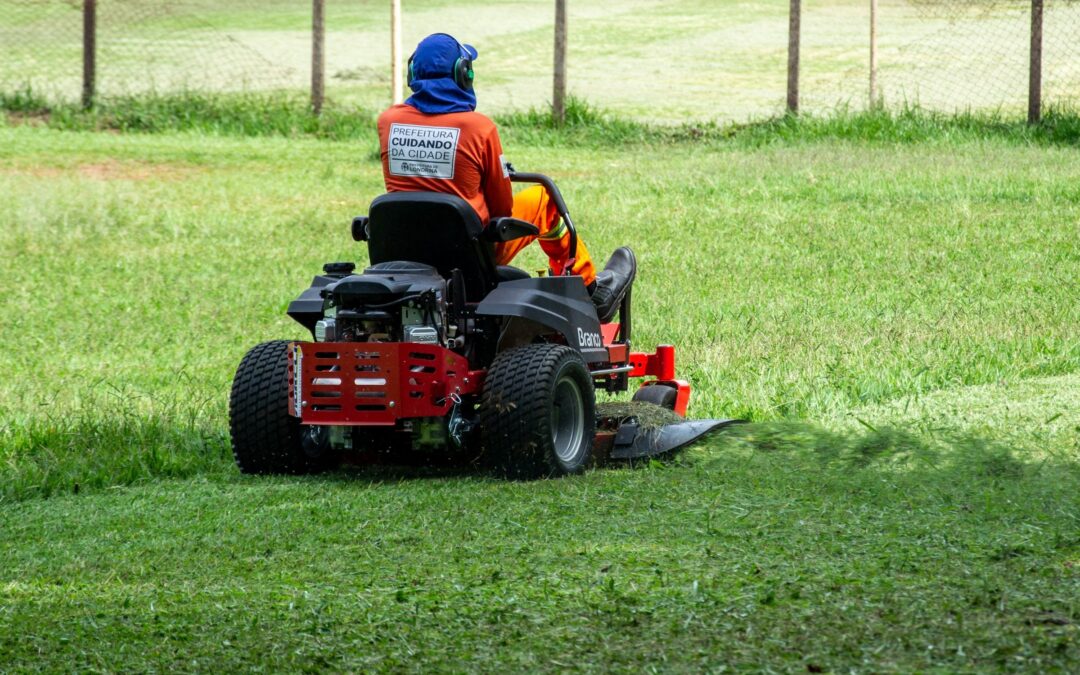Many tools that appear harmless can pose significant risks if not used or maintained correctly. Although often considered safe for routine tasks, lawn care equipment can be dangerous if mishandled. Safety should always be a top priority, even when working with tools and hazards that may seem unassuming.
Discussion Points:
- Hazards involving lawn care equipment.
- Safety protocols for employees when contractors are present.
- Safe operation of lawn care equipment.
- Training, communication, and appropriate personal protective equipment.
Discussion:
Lawnmowers, trimmers, weed eaters, and edgers are widely used in lawn maintenance but pose various hazards that can cause serious injuries. Hazards include sharp blades that can cause cuts or amputations, flying debris that injure workers, and exhaust fumes that pose a risk of carbon monoxide.
To ensure safety, employees must receive training on the proper use and maintenance of these tools and the use of appropriate personal protective equipment (PPE).
Safety protocols for employees to follow when contractors are present:
- Clearly define the boundaries between contractor’s and employees’ work areas to ensure safety.
- Inform the contractor about any potential hazards in the work environment.
- Ensure employees have received the necessary training and are equipped with the appropriate safety gear to protect themselves.
Safe operation of lawn care equipment:
- Familiarize yourself with the operator’s manual before use.
- Check for leaks and loose fasteners. Ensure safety devices, including safety switches, are functioning.
- Wear appropriate PPE, including safety glasses, face shields, hearing protection, gloves, safety-toe boots, long pants, long-sleeve shirt, high-visibility vest, and hard hat. Secure long hair and avoid wearing jewelry.
- Remove all debris, including sticks and rocks, from the work area.
- Start the equipment on firm ground in an open area. Avoid confined spaces
- Always use both hands to operate the tools.
- Keep at least 60 feet from bystanders and animals. If someone approaches, power down the equipment.
- Point equipment/tool away from people or traffic and always cut away from yourself.
- Never put your hands or feet near or under rotating parts and maintain a minimum distance of 24 inches between the guard and your feet.
- Pay attention to your surroundings and avoid distractions, including listening to music.
- Watch out for holes, drop-offs, and hidden hazards.
- Run the engine idle when not in use and always turn off the engine before setting the tool down.
- Turn off the machine and remove the battery or unplug before making any adjustments, removing or installing attachments, clearing clogged debris, or performing maintenance.
- Allow the engine to cool before refueling. Refueling must be done outdoors with the equipment turned off.
- Never operate corded electric trimmers in wet conditions.
- Do not use equipment on ladders or unstable surfaces.
- Watch for insects, spiders, and snakes in the area.
- Do not leave tools unattended. Return equipment to its proper storage location.
Employee training, clear communication, and strict adherence to safety protocols are crucial for preventing accidents and injuries involving lawnmowing and trimming equipment. Remember, safety should always be a top priority, even when dealing with tools and hazards that may seem unassuming.
As always, stay safe out there!


Recent Comments